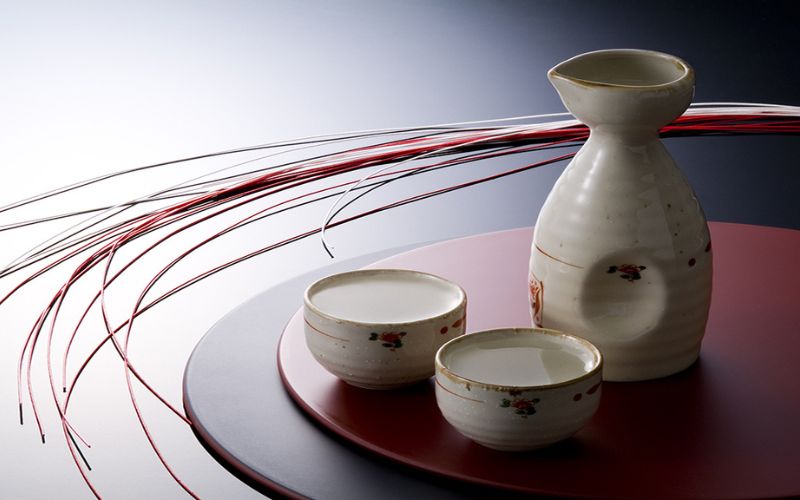
The Ritual of Sake: Understanding Sake Bottles and Cups
Sake, often referred to as Japanese rice wine, holds a revered place in Japanese culture and tradition. Beyond its delightful taste, the ritual of serving and drinking sake is an intricate part of Japanese social customs. Understanding the different types of sake bottles and cups, and the etiquette surrounding their use, can enhance your appreciation of this ancient beverage. In this blog post, we'll explore the fascinating world of sake, from its historical significance to the various vessels used in its enjoyment.

The Historical Significance of Sake
Sake has been a staple of Japanese culture for over a thousand years. It originated in ancient Japan, where it was initially produced for religious ceremonies and offerings to the gods. Over time, sake evolved into a popular drink enjoyed by people of all social classes. Today, sake is an integral part of Japanese celebrations, rituals, and everyday life, symbolizing hospitality, respect, and tradition.
The Art of Sake Bottles: Tokkuri
The traditional bottle used for serving sake is called a tokkuri. Tokkuri are typically made from ceramic or porcelain and come in various shapes and sizes. Here are some key features and types of tokkuri:
Classic Tokkuri: These bottles often have a bulbous base and a narrow neck, designed to make pouring easy and to help maintain the sake's temperature.
Karakuchi Tokkuri: These are slightly smaller and are used for serving dry sake.
Atsukan Tokkuri: Used for serving warm sake, these bottles are designed to be heated in hot water to bring the sake to the desired temperature.
Tokkuri are often beautifully decorated, showcasing traditional Japanese designs and craftsmanship. When serving sake, the tokkuri is typically held with both hands to show respect, and it is customary to pour for others rather than oneself.

Sake Cups: Ochoko and Sakazuki
The cups used to drink sake are just as important as the bottles. The two most common types of sake cups are ochoko and sakazuki.
Ochoko: These small, cylindrical cups are the most commonly used for sake. Their size allows for frequent refills, encouraging social interaction and conversation. Ochoko are often made from ceramic, porcelain, or glass, and can range from simple designs to intricate artworks.
Sakazuki: These shallow, saucer-like cups are typically used in formal ceremonies and celebrations. Sakazuki are usually larger than ochoko and are often made from lacquerware or porcelain, sometimes adorned with gold or silver leaf.
When drinking sake, it is polite to lift the cup with both hands, especially in formal settings. Additionally, it is customary to hold the cup in the palm of one hand while supporting it with the other when someone pours sake for you.

The Ritual of Sake Drinking
The ritual of sake drinking is steeped in etiquette and tradition. Here are some key aspects to keep in mind:
Pouring for Others: In Japanese culture, it is considered polite to pour sake for others, rather than serving yourself. This act of pouring is a gesture of respect and friendship.
Receiving Sake: When someone offers to pour sake for you, it is courteous to hold your cup with both hands and slightly bow your head as a sign of gratitude.
Toasting: Before drinking, it is common to offer a toast. The traditional toast in Japan is "Kanpai," which means "cheers" or "empty cup." Raise your cup slightly and make eye contact with your companions before drinking.
Enjoying Sake in Modern Times
Today, sake is enjoyed around the world, and its popularity continues to grow. Whether you're at a traditional Japanese restaurant or hosting a sake tasting at home, understanding the nuances of sake bottles and cups can enhance your experience. Here are a few tips for enjoying sake:
Temperature: Sake can be enjoyed at various temperatures, from chilled to warm. Experiment with different temperatures to find your preference.
Pairing: Sake pairs well with a wide range of foods, from sushi and sashimi to grilled meats and cheeses. Try different combinations to discover your favorite pairings.
Varieties: There are many types of sake, including junmai, ginjo, and daiginjo. Each type has its unique flavor profile, so explore different varieties to appreciate the full spectrum of sake.
The ritual of sake drinking is a beautiful and meaningful tradition that reflects the rich cultural heritage of Japan. By understanding the significance of sake bottles and cups, and the etiquette associated with their use, you can deepen your appreciation for this beloved beverage. Whether you're a seasoned sake enthusiast or a curious newcomer, embracing the rituals of sake drinking can enhance your experience and bring you closer to the heart of Japanese culture.
By incorporating these traditions into your sake drinking experience, you'll not only enjoy the flavors of this exquisite beverage but also connect with the timeless rituals that make sake such a cherished part of Japanese life. Kanpai!
